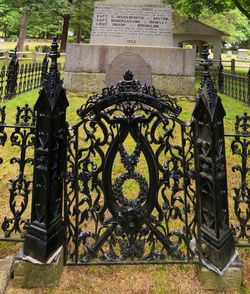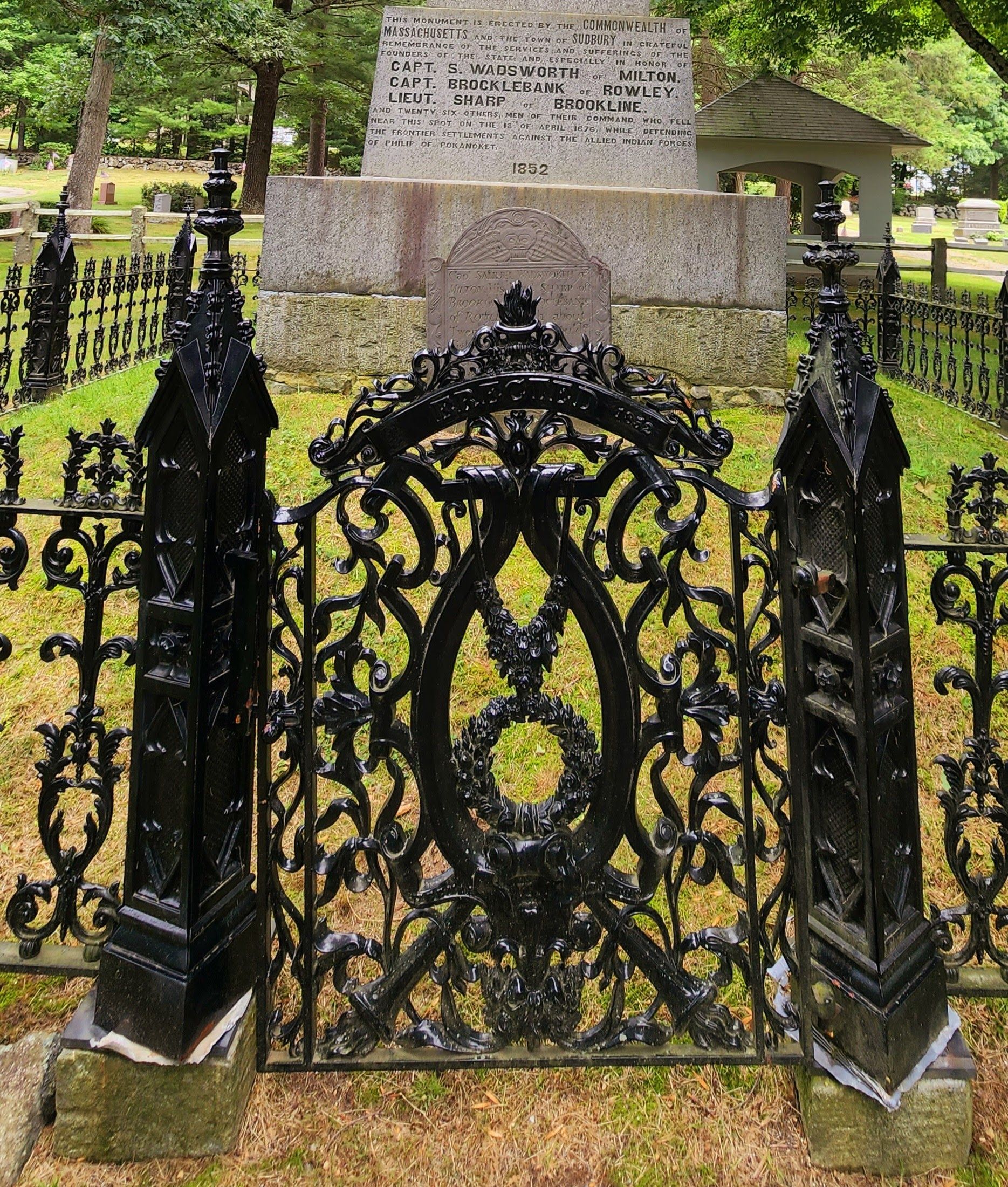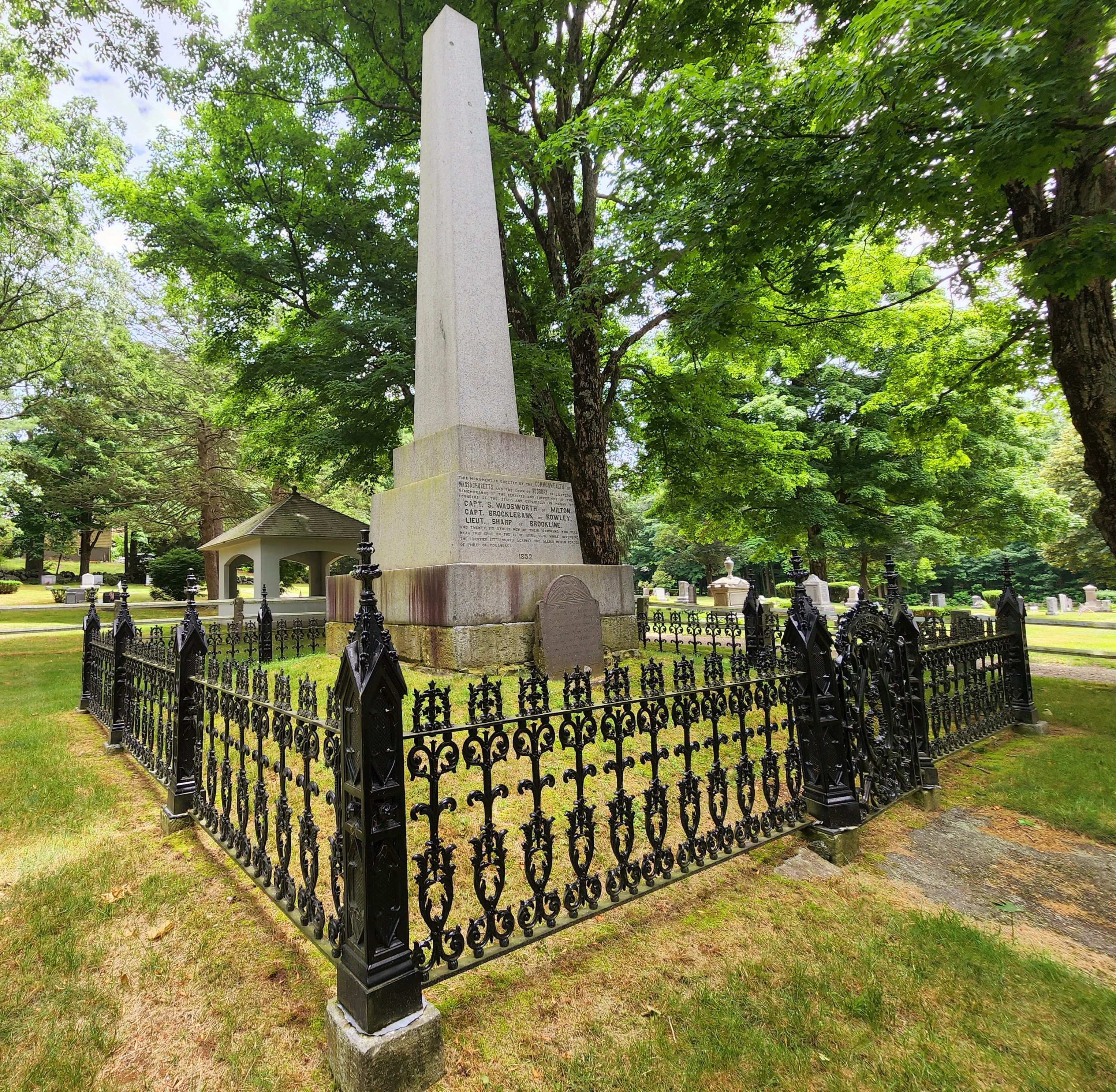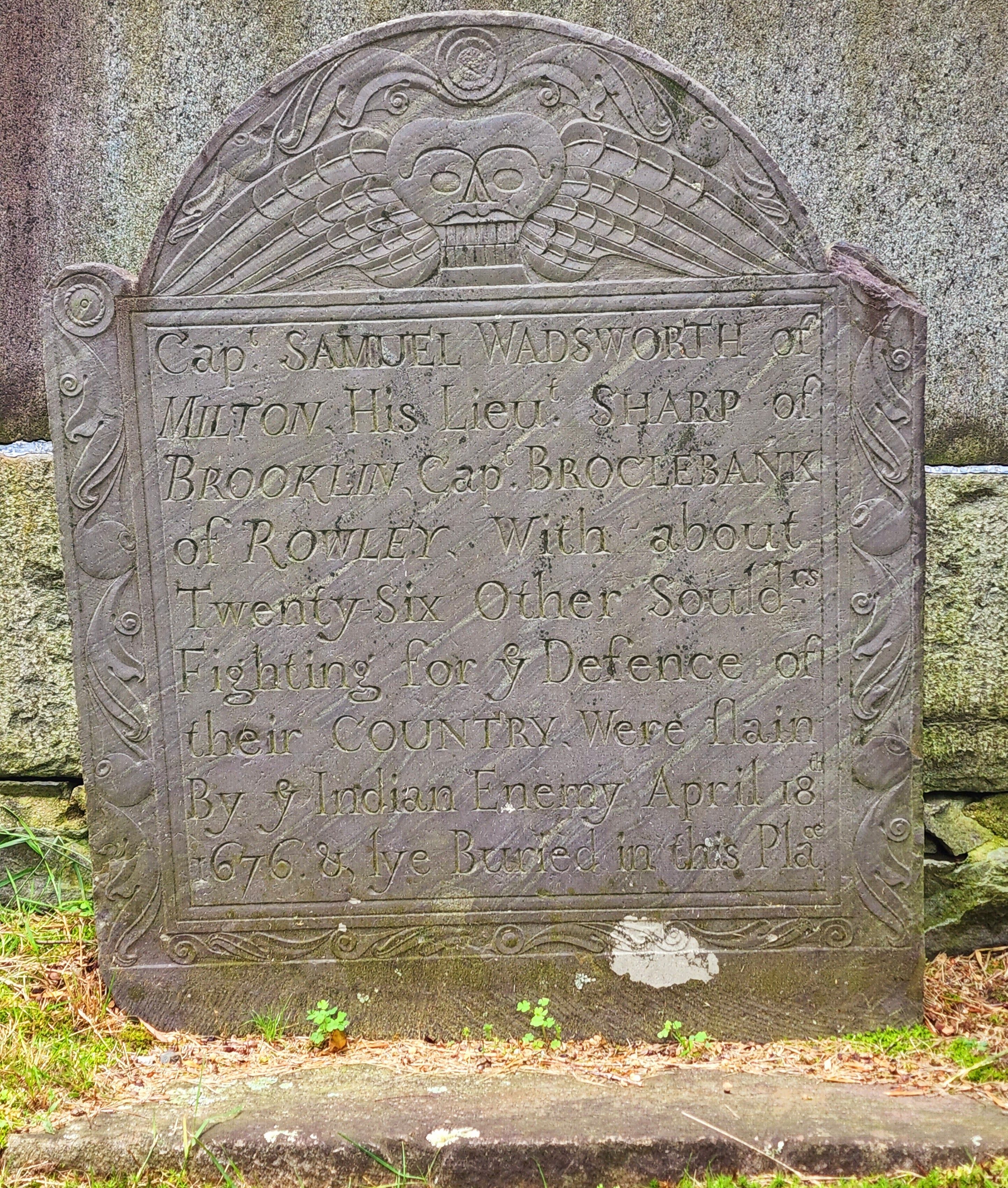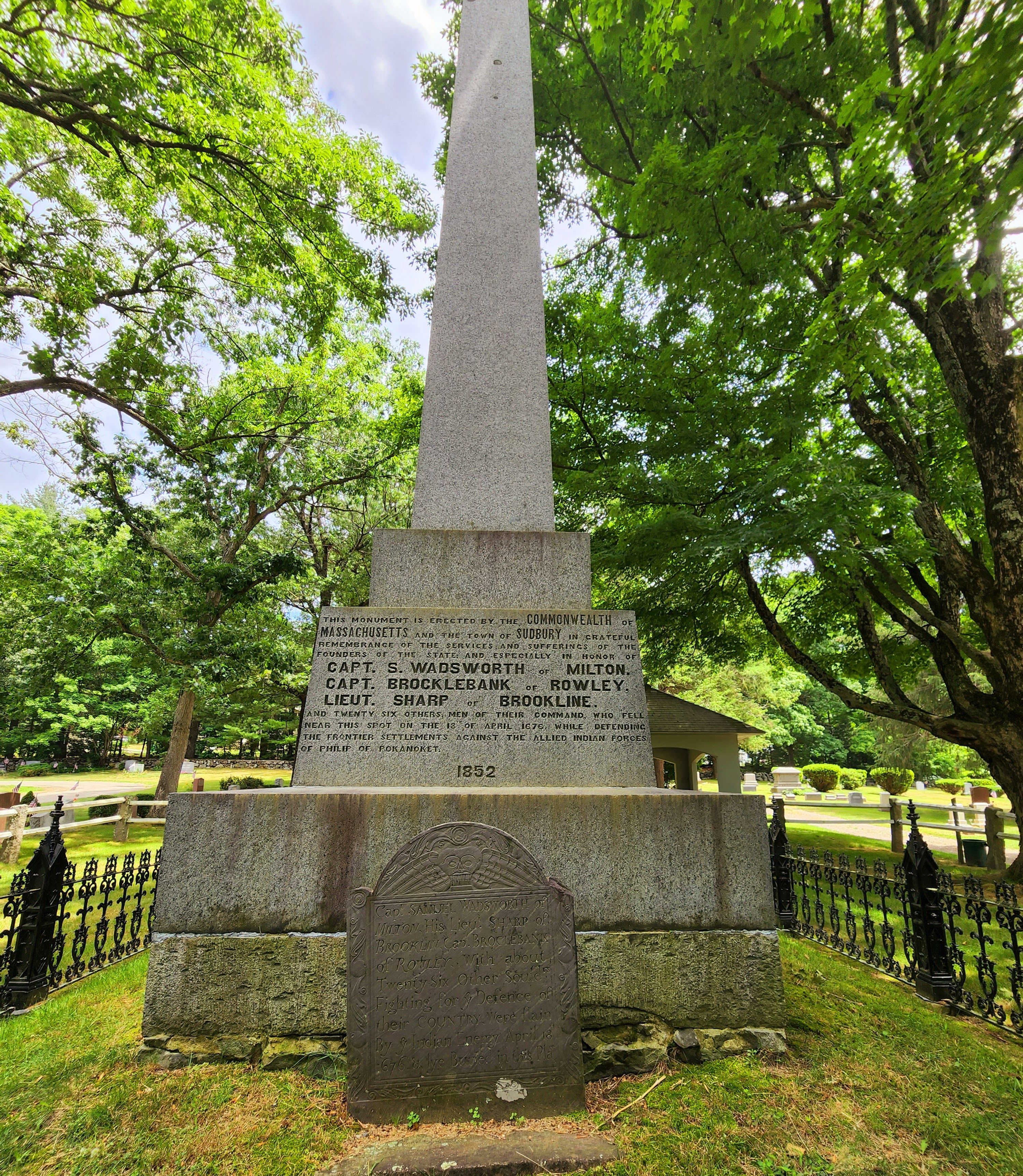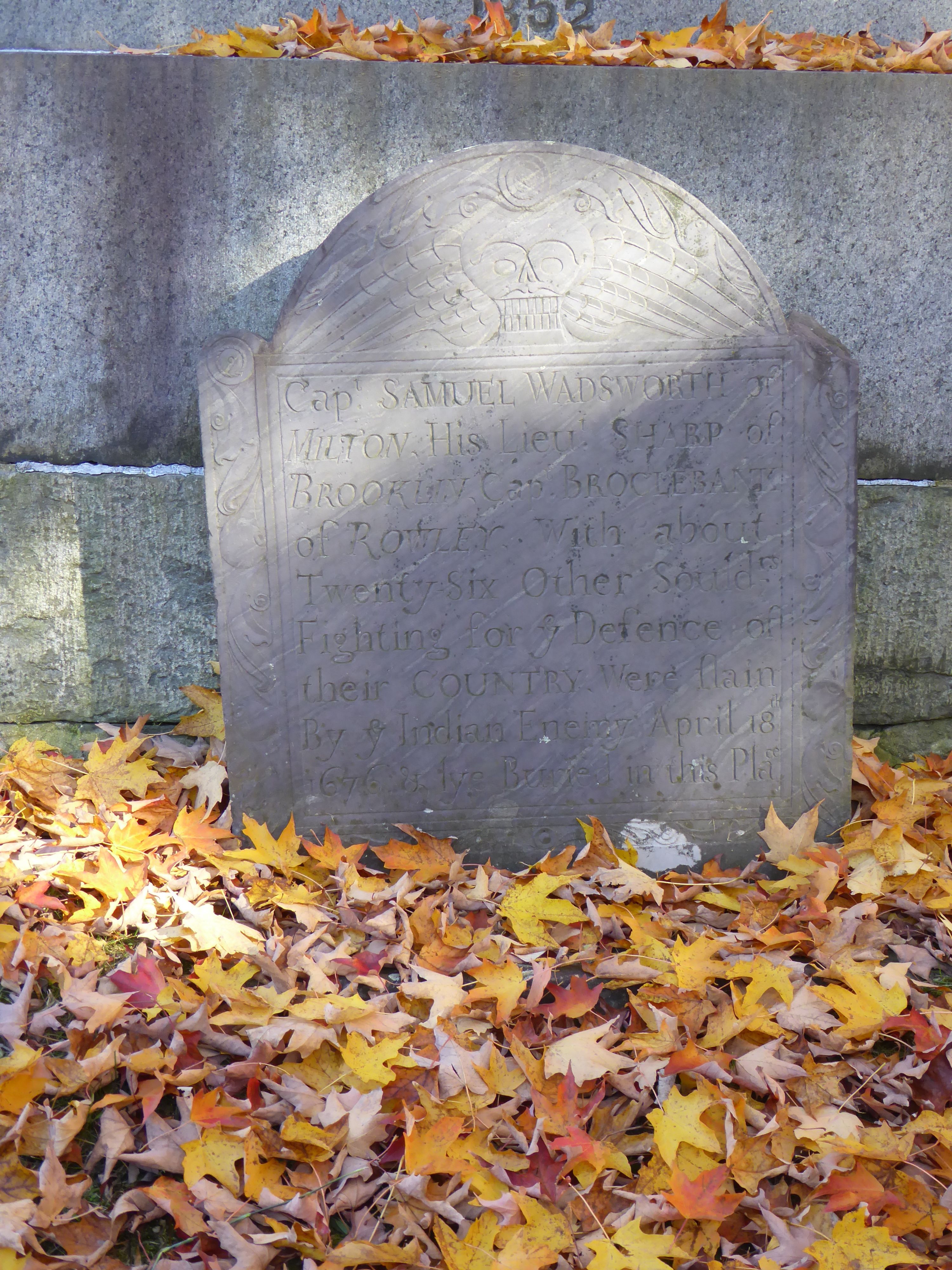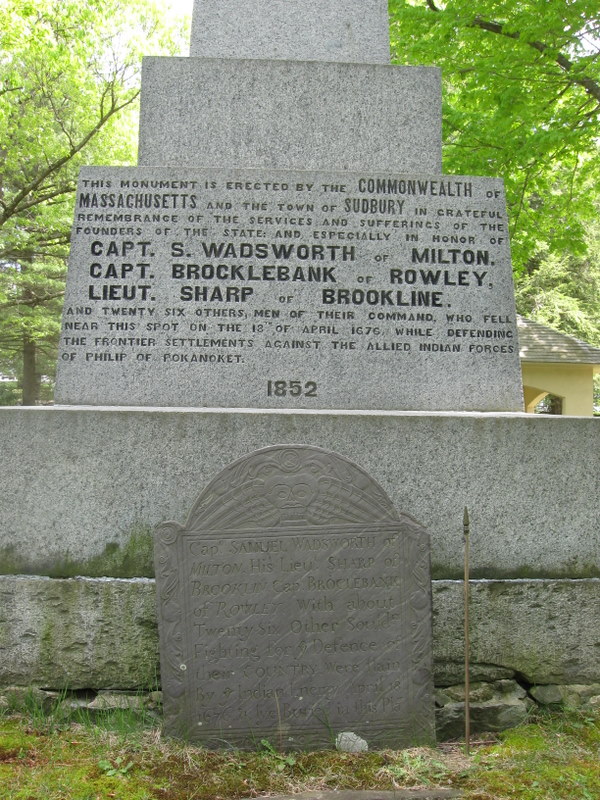The following excerpts are from the family genealogy book, "Moses Wadsworth and Hannah Stevens; Their Ancestral Lines and Their Descendants," 1941:
King Philip's War began in 1675; at that time Samuel Wadsworth was captain of the militia of Milton. In April 1676, he was ordered to repair to Marlboro with fifty soldiers to strengthen the garrison at that place. The homes there were already in ruins, and the place was almost abandoned, but a small guard was maintained to protect the road to Connecticut; Captain Brocklebank was the garrison commander. At this time, Sudbury was left the most westerly settlement, with nothing beyond except the garrison. King Philip had determined upon an attack at this place, and in person stealthily led a band of a thousand Indians to this vicinity. Captain Wadsworth and his men passed through Sudbury on their way to Marlboro, and all appeared quiet there, but when he reached the garrison, he heard that Sudbury was being attacked. Although he and his company had marched all day and all night, he hastened to the defense of the settlers, taking with him such soldiers as were able to travel, and exchanging others for men at the garrison--about fifty men in all; Captain Brocklebank accompanied the party. While reconnoitering on Green Hill, they were attacked from ambush, and Captain Wadsworth and Captain Brocklebank, with about 28 men were slain, twenty of the party escaping with their lives. This encounter was attended by dire atrocities.
A number of men of that time wrote accounts of the Battle of Green Hill, or made notes regarding it. One of these was General Daniel Gookin, the son of the Daniel Gookin who was the companion of William Wadsworth in Virginia in 1621, both men having returned to England before settling in Massachusetts. General Gookin was at this time the commanding officer of the Middlesex forces and the Superintendant of the "Praying (Christian) Indians," in the Colony. The date of the battle was estimated as taking place on one of the days between the 18th and the 21st, and eventually the 18th was decided upon. Years later, the finding of The Old Petition fixed the date as April 21, 1676.
Captain Wadsworth, with Captain Borcklebank and their men were laid to rest in a common grave on the westerly side of Green Hill, where they met their death. The place was marked by a pile of loose field stones, about 12 feet wide at their base and 3 or 4 feet high. In 1730, a slab of plain slate was erected by Captain Wadsworth's son, Dr. Benjamin Wadsworth, then president of Harvard College. In 1852, the state of Massachusetts and the town of Sudbury moved the remains to a higher portion of the cemetery and erected an obelisk, incorporating the original slab. This monument stands at the entrance of Mt. Wadsworth Cemetery, sudbury.
Captain Wadsworth was spoken of by the Rev. Mr. Hubbard, of Ipswich, as "that resolute, stout-hearted soldier." His widow survived him many years, retaining the homestead and caring for the welfare and education of her children.
The following excerpts are from the family genealogy book, "Moses Wadsworth and Hannah Stevens; Their Ancestral Lines and Their Descendants," 1941:
King Philip's War began in 1675; at that time Samuel Wadsworth was captain of the militia of Milton. In April 1676, he was ordered to repair to Marlboro with fifty soldiers to strengthen the garrison at that place. The homes there were already in ruins, and the place was almost abandoned, but a small guard was maintained to protect the road to Connecticut; Captain Brocklebank was the garrison commander. At this time, Sudbury was left the most westerly settlement, with nothing beyond except the garrison. King Philip had determined upon an attack at this place, and in person stealthily led a band of a thousand Indians to this vicinity. Captain Wadsworth and his men passed through Sudbury on their way to Marlboro, and all appeared quiet there, but when he reached the garrison, he heard that Sudbury was being attacked. Although he and his company had marched all day and all night, he hastened to the defense of the settlers, taking with him such soldiers as were able to travel, and exchanging others for men at the garrison--about fifty men in all; Captain Brocklebank accompanied the party. While reconnoitering on Green Hill, they were attacked from ambush, and Captain Wadsworth and Captain Brocklebank, with about 28 men were slain, twenty of the party escaping with their lives. This encounter was attended by dire atrocities.
A number of men of that time wrote accounts of the Battle of Green Hill, or made notes regarding it. One of these was General Daniel Gookin, the son of the Daniel Gookin who was the companion of William Wadsworth in Virginia in 1621, both men having returned to England before settling in Massachusetts. General Gookin was at this time the commanding officer of the Middlesex forces and the Superintendant of the "Praying (Christian) Indians," in the Colony. The date of the battle was estimated as taking place on one of the days between the 18th and the 21st, and eventually the 18th was decided upon. Years later, the finding of The Old Petition fixed the date as April 21, 1676.
Captain Wadsworth, with Captain Borcklebank and their men were laid to rest in a common grave on the westerly side of Green Hill, where they met their death. The place was marked by a pile of loose field stones, about 12 feet wide at their base and 3 or 4 feet high. In 1730, a slab of plain slate was erected by Captain Wadsworth's son, Dr. Benjamin Wadsworth, then president of Harvard College. In 1852, the state of Massachusetts and the town of Sudbury moved the remains to a higher portion of the cemetery and erected an obelisk, incorporating the original slab. This monument stands at the entrance of Mt. Wadsworth Cemetery, sudbury.
Captain Wadsworth was spoken of by the Rev. Mr. Hubbard, of Ipswich, as "that resolute, stout-hearted soldier." His widow survived him many years, retaining the homestead and caring for the welfare and education of her children.
Family Members
Advertisement
Records on Ancestry
Sponsored by Ancestry
Advertisement
